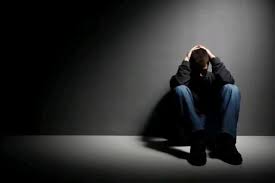Should more be done to prevent self harm among teens?
Figures released today have shown that nearly 19,000 children, aged 11 to 18, were admitted to hospital last year after harming themselves.
The NSPCC has said the 14% rise over three years is “frightening” and should be a “wake-up call” to all those who care about the wellbeing of children.
Chief executive of the NSPCC said: “A frightening number of children and teenagers are being driven to self-harm as a way of dealing with unresolved feelings, tensions, and distress in their lives.
“It is vital we confront the fact that an increasing number are struggling to deal with the pressures and demands of modern-day life, to such an extent they are inflicting terrible damage upon themselves.”
He blames social media for the pressure that it puts on young people to create the ‘perfect life’ and attain a certain unrealistic image.
One 19 year old girl said: “I’d seen stuff on the Internet and I guess that’s how I discovered it and then I hit a low when I got to an age old enough to fully understand everything that happened when my mum passed away. At the same time I had a horrible break up with my ‘first love’ and I felt worthless and began to really hate my appearance and hate how bitter I was over what happened to my mum.
“It’s tough because when you’re at that point although you want the help, the last thing you want is to talk to a stranger. I was taken to a doctor and given a sheet survey to tick off and then was told that Children and Mental Health Services (CAMHS) would contact me but I then ignored them and never went. I found the best help through School, however I felt I had to be naughty and cause a huge scene for anyone to push me and ask to get it out of me until it was impossible to hide the fact that I really wasn’t okay. It’s just really tough to try to help someone that won’t help themselves.”
The Childline helpline run by the organisation showed that every day, almost 50 counselling sessions on self harm were run, with teenagers aged 13 -17 were most likely to end up in hospital, but do they help?
She continued: “I think that because a lot of people say ‘its an attention thing’ or ‘a cry for help’ it makes it even more embarrassing, even without anyone knowing I’d feel ashamed the day after when I saw it. I think it should be made more aware of to make self harmers feel more comfortable, perhaps someone who’s willing to talk openly about their own experiences doing talks in schools etc. so then people would feel more comfortable talking to someone who really does understand. Because whenever I had counselling I just thought to myself that they have no idea what it’s like. It makes you resent them.”
As many as four in five children with mental health problems are being denied access to treatment they urgently need.
One girl said she didn’t see it as self harm because she wouldn’t do it the way that was portrayed on tv.
“I started self harming at the age 13, I wouldn’t do it how you’re ‘supposed to.’ I’d pull my hair out, bite myself, pinch myself, scratch myself with a maths compass. And then at about 16 I cut a few times and my boyfriend at the time made me go to the doctors.I think sometimes it was stress related. When I started, it was more because of bullying and other stuff but a lot of the relapsing has been stress related. I was put on antidepressants and had cognitive behavioural therapy. I’ve relapsed 3 times briefly in the last few years most recently I started biting and pulling my hair out again during the summer exam season.
“I think some service areas are doing better than others. At home we had a mental illness specific walk-in clinic. If you had a bad day and needed to see a counsellor or a doctor or whatever you could just walk in and see who you needed to. In Medway it’s been a fight for the doctors to even recognise mental health issues. Online therapies are becoming much more available too now. A lot of them are paid for but there’s a few that are free and more that you can only access through having a diagnosis or seeing a counsellor. So help is getting better, but still not at the level it should be.”
Though girls are thought to be more likely to self-harm than boys, this could be because boys are more likely to engage in behaviours such as punching a wall, which isn’t always recognised as self-harm or doesn’t come to the attention of hospitals.
One man described his experience: “When I broke up with my ex i went to a really dark place in my head. I reconnected with friend and a few others we both knew and I opened up to a mutual friend about it and they got me through it. I fell for a girl that was introduced via the mutual friend and she had a similar history so I spoke with her about it too. She was so good about it all and gave me the positivity that I needed. I used to sit in my room questioning every choice I’d made up until the break up and had angry regrets towards myself and just wanted to punish myself silently. Honestly, the break up still affects me to this day. Led to spouts of depression as I had lost so many friends that we had made together.”
Another man thinks that more awareness of services is incredibly important, “It can be hard when you’re in that situation and have kind of isolated yourself and you feel really alone. I think in a way maybe some kind of celebrity endorsement would benefit self harm services, because it can seem like you’re the only one who takes part in self harm, when in reality that’s not the case. I was on and off for a number of years and a lot of it was based on personal experience, specifically the feeling of uselessness.”
The department of Health are investing £1.4 billion to help transform services for young people with all mental health conditions, and are also strengthening the links between schools and mental health services.




